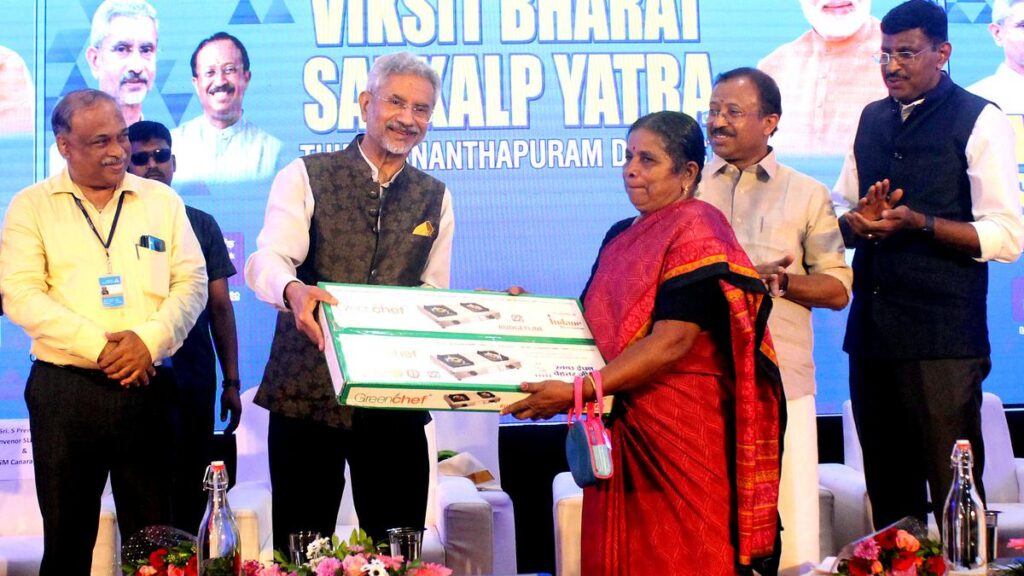Ten years of Prime Minister Narendra Modi‘s Bharatiya Janata Party (BJP) government have sparked fervent debate within India and across the globe. While supporters applaud a transformative era of “people-centric governance,” critics raise questions about the true substance of these claims. In a recent address to the Viksit Bharat Sankalp Yatra, External Affairs Minister S. Jaishankar took center stage, painting a vivid picture of Modi’s India: a nation propelled by ambitious welfare schemes, technological prowess, and a resolute focus on the common man. But is this narrative merely campaign rhetoric, or does it reflect a genuine shift in India’s governance paradigm?
Evaluating Modi’s Impact on Indian Society
Jaishankar’s speech hinged on two key pillars: the sheer scale of welfare initiatives and the government’s deft embrace of technology. He presented staggering numbers, comparing India’s flagship Pradhan Mantri Garib Kalyan Yojana (Prime Minister’s Poor Welfare Scheme) to the combined populations of the United States and Europe. Aadhaar’s ubiquity and the seamless integration of bank accounts with mobile phones, he argued, facilitated direct benefit transfers, a logistical feat unheard of elsewhere. These schemes, he asserted, had catapulted India into the global spotlight, earning the admiration of international observers.

However, Jaishankar’s rosy picture is met with skepticism by many. Critics point to the gap between ambitious pronouncements and lived realities. They argue that while some schemes have undoubtedly improved lives, issues like implementation bottlenecks, bureaucratic hurdles, and exclusion of beneficiaries mar the overall impact. The recent controversy surrounding the Pradhan Mantri Kisan Samman Nidhi (Prime Minister’s Farmer Honor Fund) and allegations of underprivileged farmers being excluded serve as a stark example.
Furthermore, the narrative of “people-centric” governance often clashes with concerns about democratic backsliding. The shrinking space for dissent, the crackdown on civil liberties, and the alleged stifling of free speech paint a different picture of Modi’s India. Critics cite the National Register of Citizens (NRC) and Citizenship Amendment Act (CAA) as examples of policies that marginalize minorities and raise questions about India’s commitment to inclusivity and equal rights.
Jaishankar’s emphasis on technology, while seemingly positive, also draws scrutiny. The ubiquitous Aadhaar program, hailed as a revolutionary tool for financial inclusion, is also marred by privacy concerns. Data breaches and potential misuse of personal information remain major anxieties, and critics warn against the dangers of a centralized database wielded by a strong, centralized government.
People’s Mandate
Beyond the rhetoric, India’s economic reality offers a more nuanced perspective. While the country registered impressive growth under Modi, the pandemic exposed underlying vulnerabilities. Rising unemployment, agrarian distress, and widening income inequality continue to plague significant sections of the population. The over-dependence on the service sector and the fragile state of small and medium enterprises (SMEs) raise concerns about India’s long-term economic stability.

Also Read: A Storm Brews in West Bengal: ED Team Attacked, Governor Warns of Action
Ultimately, the assessment of Modi’s decade in power must go beyond pronouncements and statistics. It must delve into the lived experiences of the common people, scrutinize the impact of policies on the ground, and engage with concerns about democratic erosion and social inclusion. The narrative of “people-centric governance” cannot stand solely on ambitious schemes and technological leaps; it must be grounded in tangible improvements in everyday lives, respect for fundamental rights, and a genuine commitment to building a more equitable and just India.
The upcoming general elections present a crucial opportunity for Indian voters to engage in this critical evaluation. Only then can they navigate the hype and arrive at a nuanced understanding of Modi’s India: a decade that witnessed undeniable progress, but also grappled with complex challenges and raised enduring questions about the future of Indian democracy and its trajectory towards a truly “developed India”.
Frequently Asked Questions
When are the 2024 Elections?
The Elections are likely to take place in May, 2024.
What are the key issues in the Indian 2024 elections?
The major concerns and topics that political parties are focusing on during the 2024 elections. This could include issues related to the economy, healthcare, education, infrastructure, and national security.

1 thought on “Modi’s India: 9 years of People-Centric Governance or Hype?”